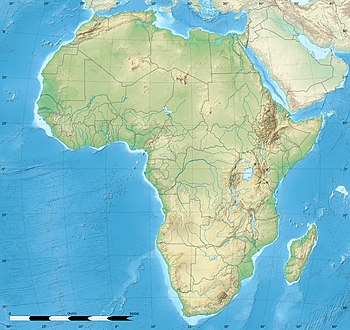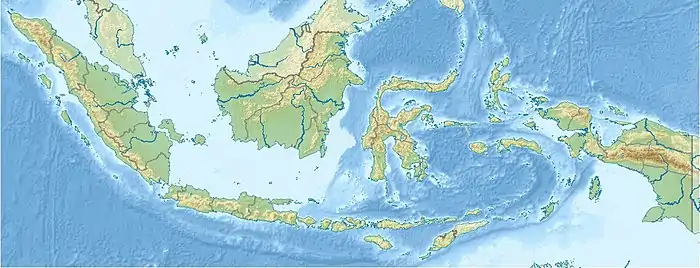| History | |
|---|---|
| Name | Daronia |
| Namesake | Daronia, a genus of extinct gastropods of the family Turbinidae |
| Owner |
|
| Port of registry | London |
| Builder | Hawthorn, Leslie & Co Ltd, Hebburn |
| Yard number | 617 |
| Launched | 19 December 1938 |
| Completed | February 1939 |
| Identification |
|
| Fate | Scrapped November 1960 |
| General characteristics | |
| Class and type | D-class oil tanker |
| Tonnage | 8,139 GRT, 4,784 NRT, 12,000 DWT |
| Length | 465.3 ft (141.8 m) |
| Beam | 59.3 ft (18.1 m) |
| Draught | 26 ft 6+1⁄2 in (8.09 m) |
| Depth | 33.8 ft (10.3 m) |
| Installed power | 502 NHP |
| Propulsion | diesel |
| Speed | 12 knots (22 km/h) |
| Sensors and processing systems |
|
MV Daronia was a 1930s British oil tanker owned by Anglo-Saxon Petroleum, a British subsidiary of Royal Dutch Shell. She was launched in 1938 by Hawthorn, Leslie in North East England and completed in 1939. She was one of a class of 20 similar tankers built for Anglo-Saxon.
In 1944 Daronia survived being hit by two German torpedoes, and in 1958 she survived being hit by a bomb in an air raid by the CIA. Shell withdrew Daronia from service in 1960 and she was scrapped in November of that year.
Building
Hawthorn, Leslie & Co built Daronia at its Hebburn yard on the River Tyne in North East England as yard number 617. She was launched on 19 December 1938 and completed in February 1939.[1][2] Her registered length was 465.3 ft (141.8 m), her beam was 59.3 ft (18.1 m) and her depth was 33.8 ft (10.3 m). Her tonnages were 8,139 GRT, 4,784 NRT and 12,000 DWT.[3]
Daronia was a motor ship. She had a Werkspoor-type eight-cylinder four-stroke single-acting diesel engine, which was built by Hawthorn, Leslie and rated at 502 NHP[3] and gave her a speed of 12 knots (22 km/h).[1]
Anglo-Saxon registered Daronia at London. Her UK official number was 167186 and her wireless telegraphy call sign was GQGB.[3]
Torpedoed and repaired

On 18 August 1944 Daronia left Durban, South Africa, in ballast and with a deck cargo of empty oil drums and general cargo. She was part of Convoy DN-68, sailing northwards in the Indian Ocean for dispersal further up the coast of East Africa.[4]
At 1941 hrs on 20 August Daronia was between South Africa and Madagascar at a position of 31°10′S 38°00′E / 31.167°S 38.000°E when the Kriegsmarine Type IXD U-boat U-861 commanded by Korvettenkapitän Jürgen Oesten hit her with two torpedoes. These did not sink Daronia, and Captain Ritchie returned her safely to Durban, where she arrived on 26 August and remained for the remainder of World War II. After the war she was repaired and in February 1946 she was returned to service.[4]
Bombed by the CIA

On 28 April 1958 Daronia was in Balikpapan Harbour, in the East Kalimantan Province of Borneo when a Douglas B-26 Invader bomber aircraft, flown by the CIA and painted black and with no markings,[5] attacked the Shell oil terminal there. The Invader bombed a larger tanker, Eagle Oil and Shipping's San Flaviano, setting her on fire and sinking her, and then attacked Daronia.[6][7][8]
Daronia and her sister ships had unusually high ventilators for their mid-ship pump rooms.[9] The B-26 dropped a 500-pound (227-kg) bomb that hit her port ventilator, but instead of exploding it bounced off towards her starboard ventilator and then fell harmlessly into the sea.[9] Daronia had a full load of petrol,[9] so if the bomb had detonated the effects would almost certainly have been devastating.
As a consequence Daronia left Balikpapan that same day for the safety of Singapore, taking with her 26 of San Flaviano's rescued crew.[10] A further 24 crew from San Flaviano followed a few days later on another Anglo-Saxon tanker, Dromus.[10] Shell also evacuated shore-based wives and families to Singapore and suspended its tanker service to Balikpapan.[7]
In June 1958 both the Indonesian and UK governments claimed that the aircraft had been flown by Indonesian rebels.[7] In fact only the radio operator was from the Permesta rebels in North Sulawesi.[11] The B-26, its bombs and its pilot, former USAAF officer William H. Beale, were sent by the CIA as part of US covert support for the rebellion.[11] The CIA pilots had orders to target foreign merchant ships to drive foreign trade away from Indonesian waters, thereby weakening the Indonesian economy and destabilising the Indonesian government of President Sukarno.[6] Shell's suspension of operations and partial evacuation of personnel was exactly what the CIA attack was intended to achieve.
For some months previously, UK Prime Minister Harold Macmillan and Foreign Secretary Selwyn Lloyd had supported US policy to supply Permesta.[12] On 6 May 1958, more than a week after the CIA sank San Flaviano and hit Daronia, Lloyd secretly told US Secretary of State John Foster Dulles that this was still his position.[13] On 18 May, Indonesian forces shot down a different Permesta B-26 and captured its CIA pilot, Allen Pope.[14][15] Nevertheless, in June 1958 both Indonesia and the UK publicly claimed that the aircraft had been flown by Indonesian rebels,[7] concealing the CIA involvement of which both governments were well aware.
Withdrawal and scrapping
Daronia remained in Shell service until 1960. In November of that year she was scrapped in Hong Kong.
References
- 1 2 "Daronia". Tyne Built Ships. Shipping and Shipbuilding Research Trust. Retrieved 24 January 2022.
- ↑ Helder, Kees. "Daronia". HelderLine. Kees Helder. Retrieved 24 January 2022.
- 1 2 3 "Steamers and Motorships". Lloyd's Register of Shipping (PDF). Vol. II. Lloyd's Register of Shipping. Retrieved 24 January 2022 – via Southampton City Council.
- 1 2 Helgason, Guðmundur. "Daronia". uboat.net. Guðmundur Helgason. Retrieved 7 August 2012.
- ↑ Conboy & Morrison 1999, p. 88.
- 1 2 Conboy & Morrison 1999, p. 116.
- 1 2 3 4 David Ormsby-Gore, Minister of State for Foreign Affairs (11 June 1958). "Indonesia (British Vessels)". Parliamentary Debates (Hansard). United Kingdom: Commons. col. 202–203. Retrieved 21 November 2011.
{{cite book}}: CS1 maint: numeric names: authors list (link) - ↑ "Indonesia: The Mystery Pilots". Time. 12 May 1958. Archived from the original on 9 December 2012. Retrieved 21 November 2011.
- 1 2 3 Born, Aad H.c.j. "Daronia". HelderLine. Kees Helder. Retrieved 7 August 2012.
- 1 2 Born, Aad H.c.j. (June 1958). "San Flaviano – Aad H.c.j. Born". Shell Magazine. Kees Helder. Retrieved 2 August 2012.
- 1 2 Conboy & Morrison 1999, pp. 99–100.
- ↑ Kahin & Kahin 1997, p. 156.
- ↑ Kahin & Kahin 1997, p. 175.
- ↑ Conboy & Morrison 1999, pp. 138, 139, 141.
- ↑ Kahin & Kahin 1997, p. 179.
Sources
- Conboy, Kenneth; Morrison, James (1999). Feet to the Fire CIA Covert Operations in Indonesia, 1957–1958. Annapolis: Naval Institute Press. ISBN 1-55750-193-9.
- Kahin, Audrey R; Kahin, George McT (1997) [1995]. Subversion as Foreign Policy The Secret Eisenhower and Dulles Debacle in Indonesia. Seattle and London: University of Washington Press. ISBN 0-295-97618-7.